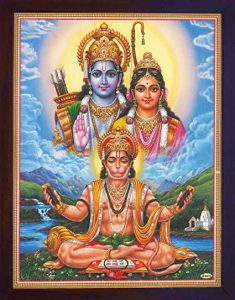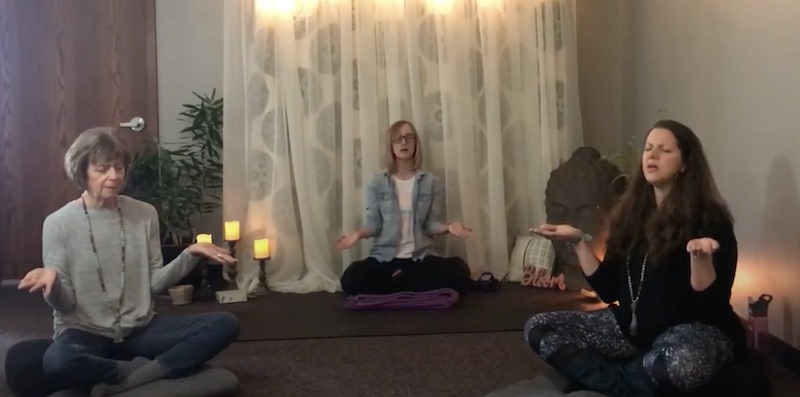Links to stream on all of the major music platforms are on the Sharanam Records website.
May all beings everywhere live in peace and joy.
From NOEBIE.net
Brian K. Noe · ·
Links to stream on all of the major music platforms are on the Sharanam Records website.
May all beings everywhere live in peace and joy.
Brian K. Noe · ·
About three and a half years ago, my wife needed a backing track for mantra practice. Being a musician, with a little bit of experience in audio production from radio and podcasting days, I recorded a very basic track for her. One thing led to another, and eventually Kirtan Music became a huge part of my life.
At some point, this melody came to me, and I decided to do my best to make a listenable recording of it.
The project began in earnest in mid-July of this year when I recorded the first acoustic guitar track. I finally wrapped up the final mix yesterday, and published the YouTube video.
Here’s a link to the post at Shyamatara Das with more information on the recording.
Today I’m in the process of distribution elsewhere, with the goal of making the song as widely available as possible. I have no illusions of fame or fortune, but I want to ensure that anyone can listen on their preferred music platform.
Some of the music platforms will not allow songs to be offered without charge, but I wanted to make sure that the song is available for free to anyone who wants it. So it has been uploaded to the Internet Archive, and can be found at this link. https://archive.org/details/the-cowboy-mahamantra
It’s also available on BandCamp, with any proceeds from that being donated to the Neem Karoli Baba Ashram in Taos.
If you use Spotify, you can pre-save the track here.
It should also be available soon on Apple Music, Amazon Music, Pandora, iHeart Radio and elsewhere.
I’ll either update this post, or add new ones when links to the other services become available.
I hope you enjoy singing along!
ॐ†
UPDATE: 2 November 2023
The song is now available on most of the major streaming services.
Brian K. Noe · ·
I was out on the front porch with the guitar, and decided to do a quick livestream to share a mantra for an end to the war in Ukraine.
OM TARE TUTTARE TURE VAJRA DZAWALA PHAT PHAT RAKSHA RAKSHA SVAHA
More info on the mantra is at these links.
Brian K. Noe · ·
We added a Tanpura/Swarmandal to our collection of instruments last week, so I’ve been spending a great deal of time getting it under hand, and using it in my daily meditation practice. It works really well for japa with shorter mantras.
I’m hoping to make it through 108 Gayatri repetitions during this month’s Key City Kirtan gathering.
Brian K. Noe · ·
 I began chanting the Sadaksara occasionally from the time I first obtained a Tibetan mala many years ago. Over the past year, as I took up the daily practice of meditation, I have alternated between it and the Adi Mantra (which we learned from Chand Shiva Singh, our Kundalini Teacher).
I began chanting the Sadaksara occasionally from the time I first obtained a Tibetan mala many years ago. Over the past year, as I took up the daily practice of meditation, I have alternated between it and the Adi Mantra (which we learned from Chand Shiva Singh, our Kundalini Teacher).
As my wife, Claudia, began her daily practice, she first used the Kirtan Kriya and then the Siri Gaitri Mantra.
Although all of these mantras have deep spiritual significance, none of them invoke (or make reference to) particular deities.
Over the past few weeks, though, I have been learning about the rich devotional tradition of bhakti. Much of that practice centers on repeating the names of various Hindu gods and goddesses.
Raised, as I was, in an Evangelical Protestant Christian home, I was taught that this sort of activity is akin to devil worship. Even the reverence of Christian Saints practiced by Roman Catholics was considered to be idolatry in our church. When I became Catholic, it took considerable study and soul searching for me to overcome this knee-jerk aversion stemmed in my upbringing.
The Catechism of the Catholic Church says that an idolater is someone who “transfers his indestructible notion of God to anything other than God.” Most Catholics, I suspect, would take this to be a prohibition against reverence to any god with a name coming from a tradition other than that of Judaism and Christianity.
Here is what I have come to believe. Our notions about God, and our faith traditions, are limited by our human capacities. Although we Catholics believe that scripture is inspired, we must also accept that the human beings who wrote the scriptures experienced the same limits of language and culture that we ourselves face. We are all trying to understand and describe something that is far beyond our ability to comprehend and convey. We can have an experience of the divine, but we can only approximate that experience when we try to conceptualize or describe it.
All of the world’s major religions have something to add to our understanding of why we are all here, and how we ought to pursue our lives. For me, Christianity in general, and Roman Catholic Christianity in particular, do better on the whole in the tasks of informing my conscience and nourishing my spirit – but I did not become Catholic because I believe that our teachings reveal the “one and only truth.” I do believe that there is truth to be found in the teachings of the Catholic Church, and in the way that we worship and work together. But this does not mean that we cannot also be nourished by the practices, and guided by the wisdom, of other religious traditions.
One of the great lights of kirtan in our age, Krishna Das, says that the practice of bhakti is singing to the loving presence that is always present within us and around us. “This loving presence may be called by all these names.”
In recent days, I have found great nourishment and comfort in singing the names of Rama, Sita, Hanuman, Krishna, Radha, Durga, Shiva – the list goes on and on. These names, for me, represent aspects of God, not beings who are distinct from God. I believe that learning their stories and chanting their names is another way of bringing more light into my life, and more love into my heart. I suppose that greater compassion will be the ultimate test of whether or not this is true.
All One.
Brian K. Noe · ·

About seven weeks ago, my wife and a couple of her yoga friends did a Facebook livestream from the Align Light studio where they shared the Siri Gaitri mantra. It was a beautiful meditation.
Unfortunately, after the live session, Facebook removed the sound, because they had used recorded music and the platform’s AI recognized it as copyrighted.
The idea struck me immediately that we could remediate the problem by recording the music ourselves. So I grabbed my handy recorder and guitar, played some arpeggios, then decided to add some keyboard sweetening. After a few hours I had the basic track together. We refined it over the next few days, adding some reference vocals and such. Done. It wasn’t what I would consider to be “listening” quality, but it was fine for the background to chanting.
It hadn’t occurred to me that this would be anything other than a fun, one-off project. But then my wife said “we should record Long Time Sun too.” So I got out the recorder and guitar again, and this time decided to add a bass guitar track in addition to guitar and keys. I had learned some things from the process for the first recording, and was noticing things during this second one that could be improved as well. Before I knew it, I found myself saying “the next one of these we do, I’ll want to start with a click track.”
By now I was absolutely hooked, and began searching all over the Web for anything I could learn about Kirtan music and devotional chanting. At this point I was still thinking of the music as a pleasant and interesting hobby or diversion. Then, something odd happened.
Although I already had a vague notion that the chanting had a spiritual basis and spiritual benefits (we chanted at the end of Kundalini Yoga sessions and our instructor always spoke about the deeper meaning of the chants), I hadn’t realized that it is at the very center of some folks’ devotional life. The practice already had a pretty firm grip on me, and now it pulled me in. It suddenly felt as if every thing that I have experienced throughout my life, from the time I was a small child, was leading to this moment of discovery.
Claudia and I continue to chant together every evening, and now I’ve added an afternoon session to my daily practice as well. I’ve also begun to read the Tulsidas Ramayana, and to consider how singing the names of Hindu deities each day relates to my life as a faithful Roman Catholic Christian. I’ll be writing more about that in the days to come.
In the meantime, we’ve ordered a harmonium. 🙂
Brian K. Noe · ·
Claudia and I have been chanting the Siri Gaitri together each day for several weeks now. Today we took to Facebook Live to share the mantra.